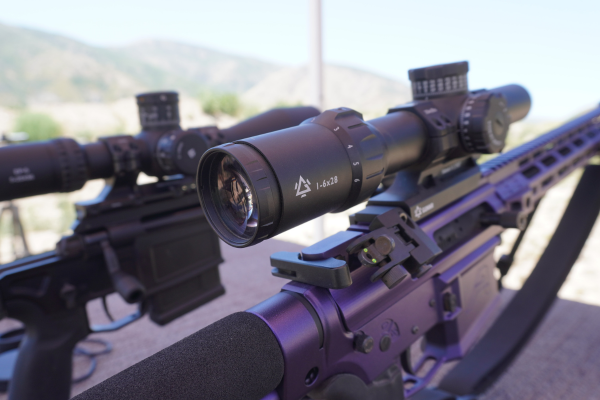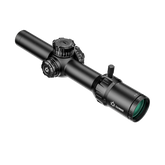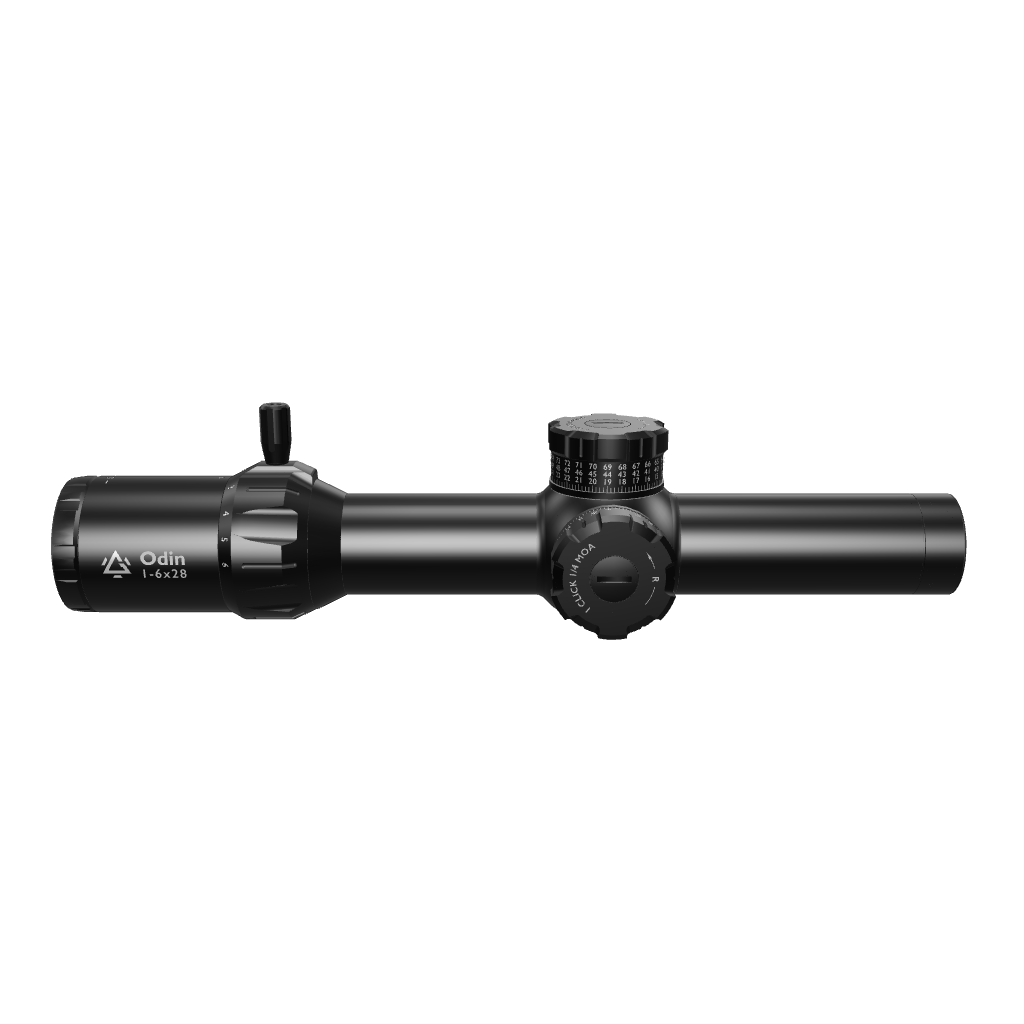What is the Best LPVO? (1-6x, 1-8x, or 1-10x)
To determine the best LPVO, it is advisable to explore all available options and find the perfect match. For many shooters, choosing the best LPVO means deciding between three main options: a 1-6x LPVO, a 1-8x LPVO, and a 1-10x LPVO.
Even if you think you need a 1-6x LPVO ( for example), exploring all the other LPVO types will give you a better understanding of all the possibilities that are open to you, help you compare features and prices, and ultimately to decide which LPVO best matches your shooting needs.
However, keep in mind that the best LPVO must come with high-quality optical glass and a reticle design that best suits your operations.
Here are the main points we are discussing
- A 1-6x LPVO is most suitable for all-purpose shooting.
- A 1-8x LPVO provides a balance of long-distance shooting and image clarity.
- A 1-10x LPVO does slightly more than what is expected of an LPVO.
- Understanding the importance of glass quality and reticle design can help you make a better decision.
- You don’t have to break the bank.
1-6x LPVO: Best for Balance
A 1-6x LPVO is generally seen as the ultimate LPVO for all-purpose use because it provides a good balance of range, field of view, and image quality.
At 1-6x, you get the features of a mid-range scope without sacrificing 1x magnification and the perks of a short-range scope.
 Here’s what you get from a 1-6x LPVO.
Here’s what you get from a 1-6x LPVO.
- More range than 1-4x while maintaining a decent FOV.
- Wider field of view (FOV) compared to higher-magnification LPVOs.
- Typically more affordable.
- Still relatively lightweight and compact.
- Better for mid-range shooting (~500 yards max).
A 1-6x LPVO pairs perfectly with a general-purpose rifle and should be on the top of your list if you are engaged in defensive use, 3-gun competition, and/or law enforcement.
Recommended 1-6x LPVO: Odin 1-6x FFP LPVO
Here’s why you should go for an Odin 1-6x 24 LPVO.
- German Schott ED glass: Clear image quality, no chromatic aberration.
- 1x magnification with an illuminated reticle.
- Made of 7075 aluminum alloy, durable and can withstand harsh hunting conditions.
- Tested to withstand 1,000 impacts at 1,000G and 2,000 live-fire rounds.
- Waterproof and fog proof: can withstand temperatures from -59°F to 149°F
- IP67 waterproofing rating.
1-8x LPVO: Best for All-Round Use
A 1-8x LPVO provides superior magnification without sacrificing image quality. It is best for longer-range applications (beyond 600 yards), and it typically enables you to see what you are shooting at a distance.

Here’s what you get from a 1-8x LPVO
- Extended effective range beyond 600 yards.
- Still usable for close-quarters engagements.
- Good balance between magnification and weight.
A 1-8X LPVO is ideal for DMR (Designated Marksman Rifle) setups, hunting, and multi-use rifles where versatility is key.
Consider the Brand
- Except the brand is good, a 1-8x LPVO might add noticeable weight to your rifle.
- Some models might have compromised optical clarity at max zoom.
Recommended 1-8x LPVO: Odin 1-8x28 LPVO
- Lightweight, weighing about 4.8×1.65×2.44 inches in size.
- Comes with a cantilever mount, directly compatible with the Picatinny rails.
- Effective zero-stop mechanism.
- Tactile and reliable turrets
- Tested to withstand 1,000 impacts at 1,000G and 2,000 live-fire rounds.
1-10x LPVO: Maximum Versatility
A 1-10x LPVO is the ultimate “do-it-all” optic: it can be used as a true close-range optic at 1x and a precision optic at 10x (~800 yards), making it ideal for military applications, long-range hunters, and everything in between.

Here’s what you get from a 1-10x LPVO.
- It practically replaces both a red dot and a mid-range magnified optic.
- It is ideal for DMR and military applications where versatility is needed.
Consider the Brand
- A 1-10x LPVO is likely to be heavier than any other LPVO. It might be best for a more static setup.
- Check the model before buying. Optical clarity may degrade at 10x in some models.
Glass Quality Makes All the Difference
At 1x, you may not care much about glass quality, but if you are going for a 1-6x, a 1-8x, or a 1-10x optic, glass quality has to be a top criterion for making your final decision.
Simply put, glass quality is the primary factor that sets high-quality scopes apart. A 1-6x optic may be better than a 1-8x if the lenses are made of superior glass quality.
Here’s why good quality glass matters for a rifle optic.
- Good glass allows more light through for cleaner, clearer, and more detailed images.
- It minimizes chromatic aberration.
- It minimizes tunneling
- With multi-coating enables lenses to ensure better light fidelity and protect the glass.
Pro Tip: Go for good quality glass: German Schott ED glass or Japanese glass, which is properly multi-coated and tested in different light conditions.
FFP vs SFP: Reticle Design Matters
The significant difference between a first focal plane (FFP) and a second focal plane (SFP) reticle lies in the behavior of the reticle when you zoom in or out.
- An SFP reticle remains the same size at all levels of magnification
- An FFP reticle, on the other hand, expands or shrinks as you switch magnification levels
Here’s a practical way to understand FFP vs SFP reticles: in a 1-6x FFP scope, the reticle is 600% bigger at 6x than at 1x. In a 1-6 SFP scope, the reticle is the same size at both 1x and 6x.
- The unique advantage of an FFP reticle is that all the adjustments (wind holds and elevation) are built into the optic and do not change even as the image appears bigger and bigger.
In other words, once your FFP reticle is zeroed at any distance (usually 50 or 100 yards), your optic does not lose zero even as you change the level of magnification. That is not the case for an SFP reticle.
Gunnr Optics: Best FFP LPVOs
Gunnr’s Odin LPVOs offer true 1x magnification and all the features and specifications to enable you to be efficient in both close quarters and long range.
The Odin 1-6x 28 LPVO and the Odin 1-8x 24 LPVO give you the basic capabilities of a red dot as well as efficiency in over medium range.







